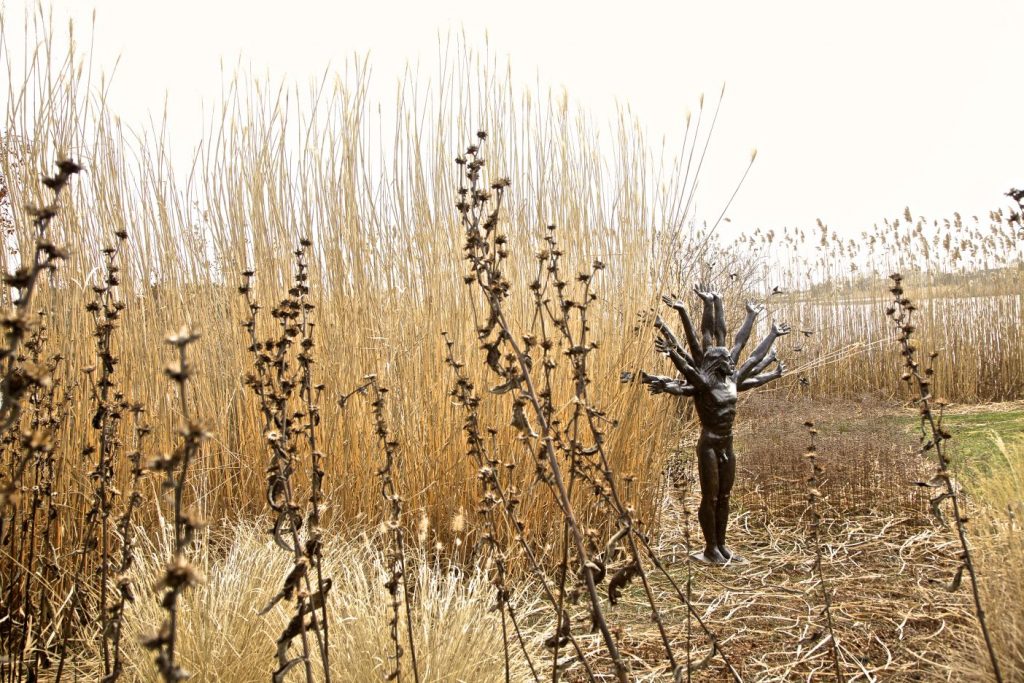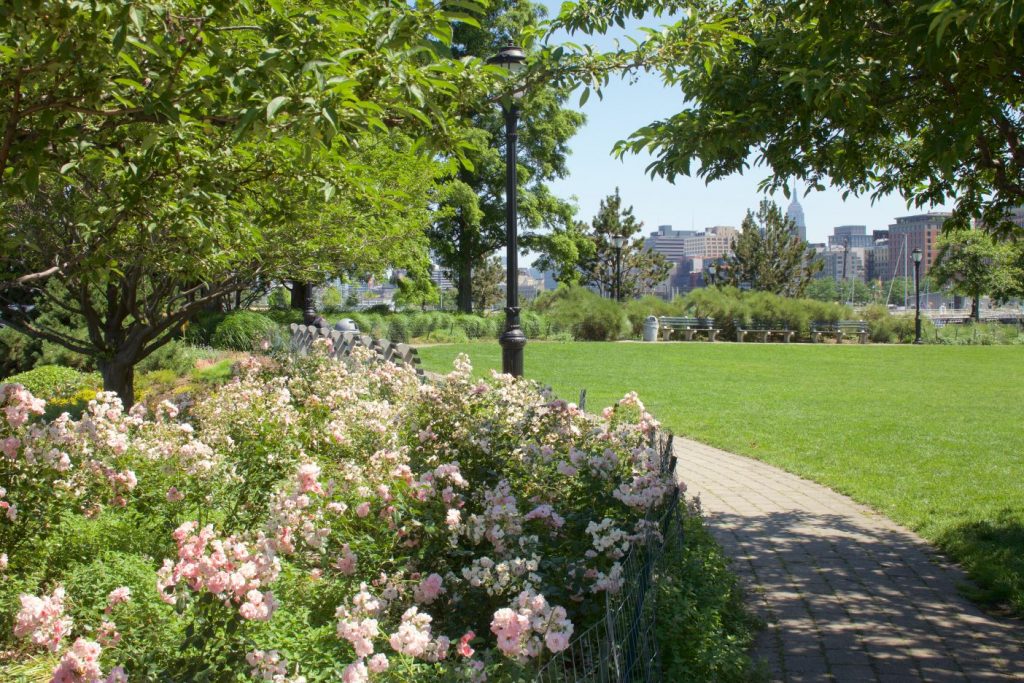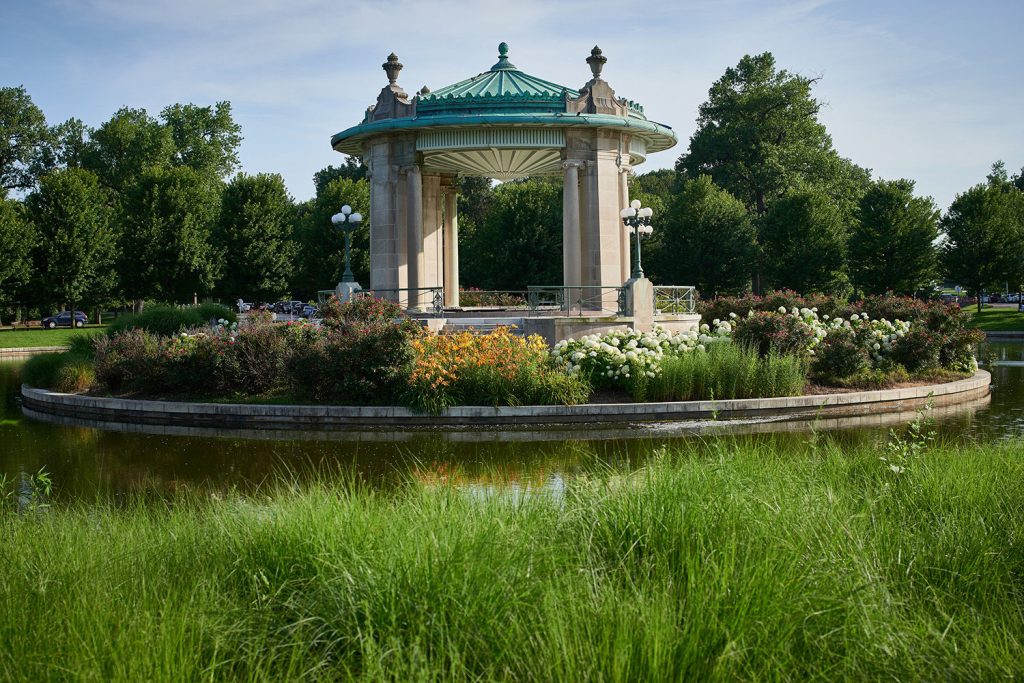Give a curator an architect’s job and you’ll get a beautiful building unlikely to stand the test of its own weight.
But give an architect a curator’s job and — as evidenced by a superbly executed new show at the National Building Museum — you get something truly noteworthy.
In the heart of this utterly geometric Washington landmark, “The New American Garden,” which opened Saturday, presents a welcome respite of the undulating Romantic.
The show was organized by NBM Senior Curator G. Martin Moeller, an architect by training, and Charles Birnbaum, president and CEO of the Cultural Landscape Foundation. It was also co-curated with Nord Wennerstrom, the foundation’s communications director. It chronicles garden design by partners Wolfgang Oehme and James van Sweden, both of whom are deceased.
On view are photographs of and plans for garden creations, including van Sweden’s home garden on the Eastern Shore and the plaza flanking a Federal Reserve annex building in Washington.
Notably featured are artworks that either inspired or were incorporated into Oehme-van Sweden gardens. These muses include a 17th-century Dutch master painting on loan from the National Gallery and a set of enormous terra-cotta abstract flowers (by the current workshop iteration) receiving their world premiere in this exhibition.
In one case, an enormous abstract metal torso is on loan from the art dealer family whose garden it adorns.
An “important element of their work [is] … the incorporation of art into landscape,” Moeller said.
The gardens themselves are beautiful, betraying a tendency toward the British Romantic style but enhanced by the partners’ penchant for modern art.

garden 2
The objects on view are fine by themselves but are made transcendent by the type of superb, strongly intentional exhibition design that the National Building Museum, grand arbiter in the annals of architecture, has a responsibility to create.
What’s exhibited shows buds, but the exhibition design puts the display in full bloom.
“We’re an architecture and design museum,” Moeller said. “So we want our environments to speak to design.
“Sometimes in art museums, they really want all the exhibition design to fade away. We want to find that balance.”
In three galleries of a hall dominated by immutable lines and geometric shapes, the show manages to break away into Romantic oscillations, much like Oehme and van Sweden’s gardens do.
“Our building is great, but it’s very insistent,” Moeller said, referencing the museum’s symmetrical Renaissance Revival building. “It can be hard to break away from that geometry of that building. … That was a very explicit goal in this case.”
This is achieved through careful layering of false walls that create depth like a naturally terraced garden and lead visitors on an S-curve path through the show like the natural borders Oehme and van Sweden used.
“We didn’t want a straight path through here,” Moeller said of the winding visitor journey. “One of the things [Oehme and van Sweden] talk about is [that] as you walk through a garden, there should be multiple discoveries.”
In the museum setting, Moeller said, there’s a “path that you do kind of wander around and find even little dead ends that you then come out of.”
Additionally, the show’s palette uses bright, popping colors cherry-picked from features of the pictured gardens.
On one wall, the piercing pink of an azalea explodes. On another is the rich purple of alliums, ornamental onion flowers. In some, the cool beige of stonework creates the highlight. The arresting inchworm green of freshly shorn grass on one wall gives a nod to the absurd.
The colors mercifully avoid the gimmicky splashes that such brightness can all too often threaten. The show narrowly skirts the sort of crowd-pleasing presentation that the Building Museum used in its much-loved “Beach” and “Maze” shows, which raked in visitors like fallen leaves but knocked the institution’s serious art credentials in this critic’s opinion.

garden 3
One place where the exhibition strays over to the third rail is in a loud looped video about the architects near the entrance. It echoes through the rooms with a slight air of unpleasantness, much like a nearby roadway could disturb a garden’s tranquility.
The anchor of the exhibition’s colorful motifs (and the architects’ unique style) is “Nature Abhors a Vacuum,” a mural-sized painting by Helen Frankenthaler replicated on the show’s opening wall.
Frankenthaler’s fierce daubs of brilliant color informed the landscape work most tangibly in Oehme and van Sweden’s work at the New York Botanical Garden. The swaths of flowers are like brushstrokes, swishing across the landscape with an architect’s careful eye and an artist’s indefatigable panache.
When the partners were lobbying for a commission from the Chicago Botanic Garden, they referenced the painting as a main inspiration, not knowing that Frankenthaler was one board member’s favorite artist, Moeller said.

garden 4
With the ornate plantings outside this university’s Tawes Hall beginning to wither and the famous “M” circle relegated to a disappointing patch of vaguely vermilion mulch, the Building Museum’s foray into brilliant color and remarkable verdure is a welcome one.
Cold as it might get outside, the sun shines within and reinvigorates those who care to enter. So it is with the show and with the Oehme-van Sweden gardens themselves, at least in one garden owner’s opinion:
“Mrs. Vollmer, the client for this, who’s still around at the age of 99, claims that it completely changed her life,” Moeller said. “That it created this sense of repose and peacefulness in her garden that was unlike any of the ones that she found.”
So, too, is this masterful exhibition designed like none other.
“The New American Garden,” co-curated by Charles Birnbaum and Nord Wennerstrom of The Cultural Landscape Foundation, runs at the National Building Museum through May 1. Student admission costs $7 and general admission is $10, and the museum is nearest to Judiciary Square Metro Station.
CORRECTION: Due to a reporting error, a previous version of this story incorrectly listed G. Martin Moeller as sole curator. The story has been updated to reflect this correction.
Wolfgang Oehme (L) and James van Sweden (R).
The Rosenberg residence.
Rockefeller Park.
Forest Park – Pagoda Circle.






